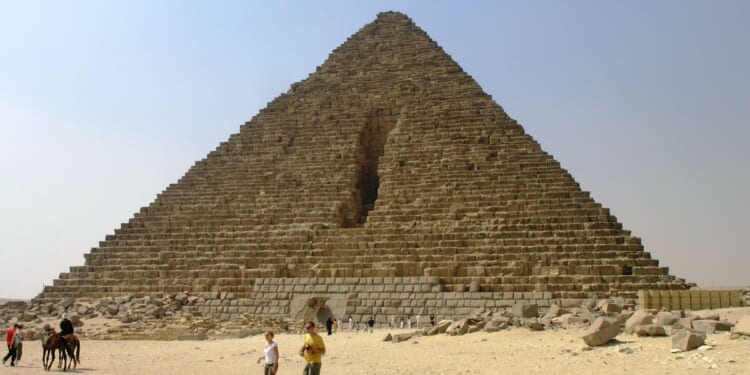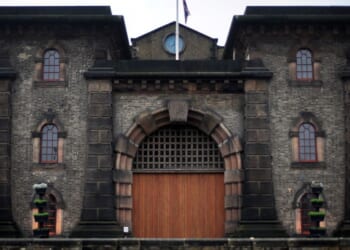Scientists have been left baffled after two mysterious air-filled spaces were discovered behind one of Egypt’s great pyramids.
Researchers working on the Pyramid of Menkaure have potentially confirmed the existence of a long-suspected second entrance to the ancient structure.
The breakthrough came after researchers from Cairo University and the Technical University of Munich employed cutting-edge scanning technology to examine the 4,500-year-old monument without disturbing its ancient stonework.
The team utilised radar, ultrasound and electrical resistivity tomography to probe beneath the pyramid’s surface, revealing the hidden cavities behind an unusually polished section of granite blocks.
The discovery represents a significant advancement in understanding the Giza complex’s third-largest pyramid, which has stood for millennia alongside its more famous neighbours.
The Pyramid of Menkaure, constructed around 2510 BC as the final resting place of the Fourth Dynasty ruler, rises nearly 200 feet above the Giza plateau.
The monument’s eastern façade features a distinctive rectangular section measuring approximately 13 feet high and 19 feet wide, where the granite blocks display an unusual polished finish.
This smooth stonework mirrors the treatment found at the pyramid’s established northern entrance, prompting speculation about a concealed doorway.

Scientists made the discovery in one of Egypt’s key landmarks
|
GETTY
Independent researcher Stijn van den Hoven first proposed the theory of an additional entrance in 2019.
However, the hypothesis remained unverified until the recent investigation confirmed structural anomalies beneath the polished surface.
The research team’s non-invasive examination revealed two distinct air-filled anomalies at varying depths within the pyramid’s structure.
The larger void measures 3.2 feet by 4.8 feet and sits 4.5 feet beneath the surface, whilst a smaller cavity of 2.9 feet by 2.2 feet lies at a depth of 3.7 feet.

The pyramid is the smallest of the three ‘great’ Pyramids in the Egyptian capital
|
WIKICOMMONS
The sophisticated scanning techniques allowed researchers to map these spaces without damaging the ancient monument, although they acknowledged limitations in determining how far the anomalies extend into the pyramid’s interior.
The team’s multi-method approach, combining three different technologies, provided reliable data that supports the existence of these previously unknown structural features behind the eastern façade.
Christian Grosse, professor of non-destructive testing at TUM, described the findings as “an important finding in Giza”.
“The testing methodology we developed allows very precise conclusions to be drawn about the nature of the pyramid’s interior,” he stated. “The hypothesis of another entrance is very plausible, and our results take us a big step closer to confirming it.”

King Menkaure wearing the white crown of Upper Egypt, with the goddess Hathor to his right and the 17th nome of Upper Egypt to his left
|
GETTY
The researchers emphasised that their findings require further examination by Egyptological experts before drawing definitive conclusions.
Historians have never been able to ascertain how Menkaure, the Fourth Dynasty king, died as a young man in 2503 BC.
The sarcophagus within the pyramid was lost at sea nearly 200 years ago during attempts to transport it to the British Museum in London.
The merchant ship carrying it, Beatrice, mysteriously disappeared after leaving port at Malta on October 13, 1838.
The Giza complex, west of Cairo, includes the pyramids of Khufu, Khafre, and Menkaure, along with the Great Sphinx.
The most famous pharaoh at the site is Tutankhamen, whose tomb was discovered in 1922.
Preserved to this day, in the tomb are original decorations of sacred imagery from, among others, the Book of Gates or the Book of Caverns.

















